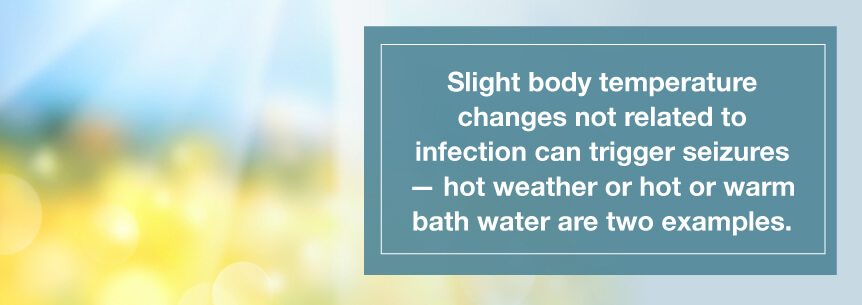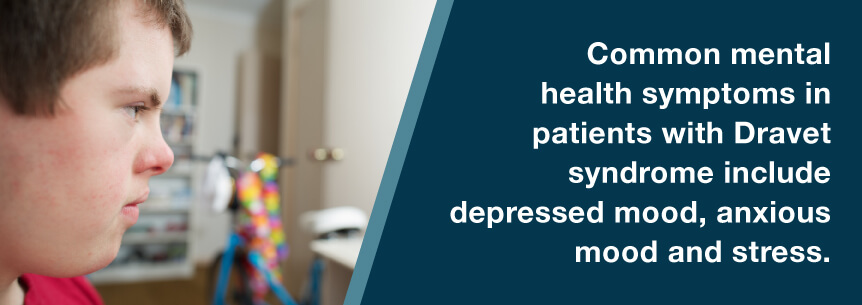
Dravet syndrome is a condition that causes frequent seizures and neurodevelopmental delays, decreasing the patient’s quality of life. It’s also somewhat resistant to the standard treatments. Therefore, many parents are turning to alternative methods of treatment to help ease their children’s seizures and symptoms. In fact, several studies have found that medical marijuana can potentially reduce many symptoms of this condition.
Dravet syndrome, also known as severe myoclonic epilepsy of infancy (SMEI), is a severe type of epilepsy. It occurs in children during their first year of life and causes febrile seizures — or seizures related to fevers. These types of seizures are rare in children after age five.
A child with Dravet syndrome may also have other types of seizures, such as myoclonus or involuntary muscle spasms. They can also have status epilepticus, where they require emergency medical care due to continuous seizure state. Kids with Dravet syndrome often struggle with:
Up to 80 percent of Dravet syndrome cases are the result of defects in a gene needed for proper brain cell function, reports the National Institute of Neurological Disorders and Stroke. Generalized epilepsy with febrile seizures plus (GEFS+) and Borderline SMEI (SMEB) are two types of infant-onset epilepsy resulting from defects in the same gene. Children may continue experiencing febrile seizures with GEFS+ beyond age five, as well.
Researchers don’t completely understand how many individuals Dravet syndrome effects. Some reports suggest up to one in 40,000 individuals have Dravet syndrome, according to the Epilepsy Foundation. Out of all children who have their first seizure by the time they’re one year old, three to eight percent may have Dravet syndrome.
Significant risk factors for a diagnosis of Dravet syndrome are:
The gene known as SCN1A is the most common gene mutation associated with Dravet syndrome. When the gene isn’t working as it should, the brain’s sodium channels designed to help with brain cell functioning don’t work correctly.
Other types of gene mutations could affect these sodium channels and lead to Dravet syndrome, as well. The doctor can confirm the diagnosis with blood testing for the mutation. In some cases, the doctor doesn’t find a gene mutation on the test, but can still diagnose the syndrome based on the child’s symptoms. Vaccines don’t cause Dravet syndrome, despite the fact that many infants with the condition have their first seizure around the time of vaccination — children should still get all their vaccinations.
Seizures typically begin in a child’s first year of life. This initial seizure often follows a fever and could be a tonic-clonic seizure — previously called a grand mal seizure — which presents itself as jerking movements on only one side of the child’s body.
Brief shock-like jerks of a group of muscles or a muscle, known as myoclonic seizures, start between the ages of one and five in 85 percent of kids with Dravet syndrome. Early-life seizures tend to last more than two minutes or are repetitive and may lead to the life-threatening condition status epilepticus.
Dravet syndrome patients may also develop various other types of seizures, such as:
Once a child has their first febrile seizures, they can have more seizures without a fever. However, these children often have seizures when they’re sick or have a fever and are extremely sensitive to infections.
Slight body temperature changes not related to infection can trigger seizures — hot weather or hot or warm bath water are two examples. A lot of kids also have photosensitive seizures triggered by things like patterns, similar photic triggers or flashing lights. Excitement or emotional stress may also trigger an attack.

Disorder subdivisions include:
SMEI or severe myoclonic epilepsy of infancy is a complicated type of epilepsy first described in 1978 in France. Since the myoclonic component of this type of epilepsy isn’t always present and there is some observed symptomatology variability, in 1989, Dravet syndrome became its name. Researchers discovered the genetic etiology of this epilepsy in 2001, and various studies since then have helped researchers gain a better knowledge of the condition.
The severity of seizures can range from mild to the most severe, which is considered Dravet syndrome.
Symptoms often include:
Some common problems linked with Dravet syndrome include:
In the early years, kids tend to develop normally. However, after turning two years old, they begin losing developmental milestones, or they don’t progress as fast as they get older. They also have an increase in seizures. There appears to be a connection between seizure frequency, the degree of developmental delay and how frequently status epilepticus occurs in children.
Around the age of six, some children may start having their cognitive problems improve or stabilize. Although many kids with Dravet syndrome continue having a certain degree of developmental disability.
The treatment options today are limited, and the need for continuous care for the patient can impact both the patient’s quality of life and the caregiver’s.
Estimates show around 20 percent of individuals with this disorder will pass away before they reach adulthood — usually before they reach 10 years of age. Most cases of death occur in children who are eight years old, but it can range from infancy to 18 years old. Sudden unexpected death in epilepsy (SUDEP) is the most common cause of the fatality.

Common mental health symptoms in patients with Dravet syndrome include depressed mood, anxious mood and stress.
Facts surrounding Dravet syndrome, according to the National Institutes of Health (NIH), include:
Since there is no cure for Dravet syndrome, the treatment goals are to decrease the number and length of seizures, limit adverse effects of antiseizure medications, prevent status epilepticus, improve quality of life and promote better neurocognitive development. In general, there are five approaches patients and their families can take.
Dravet syndrome patients are more sensitive to specific triggers of seizures than other people with epilepsy, and an essential part of treatment is knowledge and guidance surrounding common triggers. Therefore, it’s critical to avoid common triggers like these:
In some situations, vaccines can be a trigger. To prevent vaccine-related fever, your child’s pediatrician may suggest you give your child a fever-reducer before they’re vaccinated and for the following 24 hours after their vaccine.
Everyone who has Dravet syndrome is different, so while one particular drug will work good for one child, it might not work for another. Typically, doctors try and prescribe medicines in a systematic order, starting with medications that have helped a large number of patients, to determine which treatment works better for each child.
The medications below are first-line treatments for this condition and have benefitted many patients.
Valproic Acid
Side effects of valproic acid may include:
Clobazam
Side effects of clobazam may include:
Topiramate
Side effects of topiramate may include:
If these medications fail, the next approach will consist of the following second-line medicines.
Stiripentol
Side effects of stiripentol may include:
Levetiracetam
Side effects of levetiracetam may include:
For status epilepticus patients — or those experiencing the life-threatening seizures continuing one after the other or lasting for more than five minutes — can receive what’s referred to as “rescue medications” to attempt to stop the seizure. This type of rescue medication is something you keep on-hand for emergency use. Examples of rescue medications are diazepam, lorazepam or midazolam. Side effects of these types of drugs may include:
Certain epilepsy medications can make your seizures worse, and you should avoid them. These include:
A low-carbohydrate, high-fat ketogenic diet is sometimes helpful for Dravet patients, particularly if they don’t respond well to medication. Research shows between 60 to 71 percent of individuals with Dravet syndrome have fewer seizures while they’re on this diet. The diet is also associated with improving cognition and behavior.

If this seems like a viable option, your child’s dietitian and neurologist will help you design a ketogenic diet that’s right for your child.
If medicine isn’t working, the doctor may consider vagal nerve stimulation, which involves the doctor implanting a small device around the vagus nerve in your child’s neck. The device then sends mild, but regular electric signals to your child’s brain from their vagus nerve to interrupt a seizure or keep one from occurring.
Giving marijuana to a child continues to be a highly controversial subject, but medical weed does work for circumstances where conventional treatment delivers hardly any results. A 2013 survey published by Standford University Department of Neurology shows parents can give Charlotte’s Web — a CBD-dominant marijuana strain — to their children to help control treatment-resistant epilepsy. This includes Dravet syndrome.
Parents reported a dozen common prescription medications didn’t control their children’s symptoms. Meanwhile, around 84 percent of them said CBD-rich marijuana products did help alleviate their symptoms. For approximately 11 percent of the kids, their seizures stopped altogether. About 42 percent showed 80 percent less frequent seizures, and 32 percent of the kids indicated experiencing between 25 to 60 percent less-frequent seizures when using CBD cannabis products.
Research showed cannabis products can help regulate the body’s endocannabinoid system (ECS) by producing anti-seizure effects. Marijuana’s natural cannabinoids interact with the CB1 and CB2 cannabinoid receptors of the ECS, suggesting they do show potential for seizure activity management.
As a potential Dravet syndrome treatment, cannabis can help minimize or eliminate symptoms such as:
Researchers aren’t entirely sure how CBD reduces seizures, but studies have found it has neuroprotectant and anti-inflammatory properties.
Medical weed rich in CBD decreased the frequency of seizures in 85 percent of kids, according to a study published in the journal Epilepsy & Behavior. Fourteen percent were completely free of seizures, 53 percent had improvements in sleep, 63 percent in mood and 71 percent in alertness.
Using marijuana as Dravet syndrome treatment can also help lessen or eradicate the side effects of certain medications. For instance, anticonvulsants have a variety of side effects, including:
All of these symptoms are manageable with medical marijuana.
Charlotte’s Web seems to be the strain of choice to help treat seizures and other symptoms of Dravet syndrome. Named after Charlotte Figi, a little girl with epilepsy, this strain has been proven to be safe and effective for children. It’s rich in CBD, but low in THC, so it can help treat seizures without getting the user high.

Other potential strains for treating Dravet syndrome include:
Patients can use marijuana to create concentrates or confections. You can eat it, drink it and smoke it. Common ingestion methods include:
Whether you smoke a joint or bong, bake some brownies or rub on a skin ointment, be sure to choose the ingestion method that makes the most sense for your condition, symptoms and lifestyle preferences.
Most legal cannabis states allow epileptic patients or anyone who experiences seizures to use medical weed. If you’re looking for symptom and seizure relief, you can find help at MarijuanaDoctors.com. Our database gives you access to hundreds of cannabis doctors all over the U.S., as well as listings for marijuana dispensaries where you can get your products.
Find A Doctor Find A Dispensary